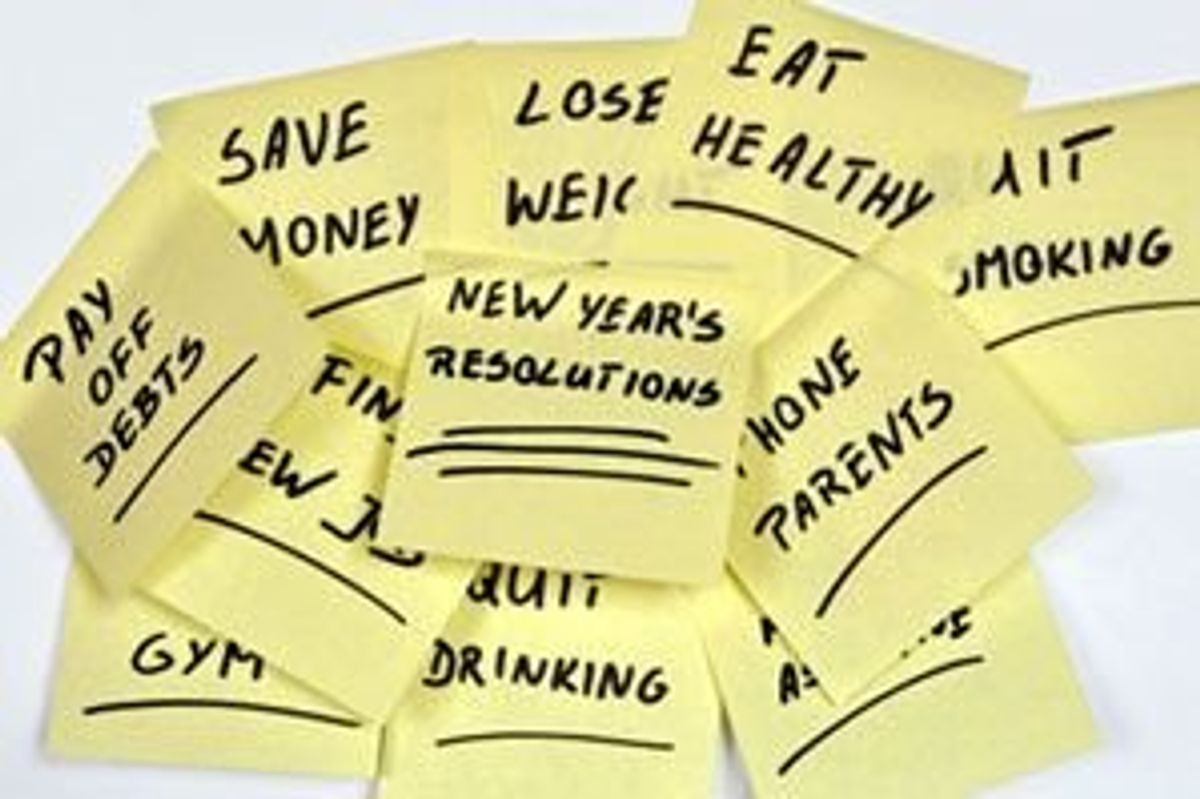By Steve Repak, CFP
Congratulations on being part of the 48 percent of the population that actually made New Year's resolutions. Now for a reality check: Less than 10 percent of you will be successful in keeping your resolutions. Don't get discouraged. Use that truth to light a fire and do something about it. Most resolutions are made by people who want to be in better physical shape or better fiscal shape. I will share with you five simple steps that can help you accomplish both.
Step 1: Do Something
The key word is do! It is impossible to change what is going on in your life without doing something. Do is an action verb so the first step is to take action. I like to remind people that the hardest step is the first step. Many personal trainers tell their clients that the hardest weight to push when you finally decide to get into shape is the front door to the gym. The same is true with getting out of debt or saving money. It might not be as easy as opening a door but it is as easy as pulling out a Tupperware bowl, filling it with water, putting in your credit cards and then placing it in the freezer. Take action and make a commitment to yourself, and the toughest part will be behind you.
Step 2: Set Your Goals
Your goals need to be achievable, challenging and specific. If your goals are not achievable because you set them too high you will quickly become discouraged and eventually quit, but if you don't make your goals challenging, you won't see any real change. Finally, your goals need to be specific. Don't say your goal is to lose weight or to build up your savings. A better goal would be to say you will lose 1 to 2 pounds weekly, 5 pounds in a month and 30 pounds by June. Don't say you want to have more money in the bank to be in better fiscal shape. A better goal would be to save at least $25 a week and $100 a month. By June you want to have an additional $600 in savings.
Step 3: Make a Plan and Write It Down
To start your plan, conduct an initial assessment. You have to know where you are starting from to get to where you want to be. If your goal is to be able to complete a 5-K run in June in less than an hour, how far and how fast can you run now? If your goal is to build your savings to $1,500 by year end, how much do you have in savings and how much are you saving now? Once you have conducted your assessment, write it down. Studies show that people who write down their plans have a higher probability of achieving their goals than those that don't. Your next step is to develop a strategy to get you from your assessment to your goal. It is the "how" part of what you will have to do. Put what you are going to do in writing. Always remember that your plan needs to be flexible because there will be times when you might get thrown off track. Don't let getting off track be your excuse to quit. Deal with it, make any necessary adjustments and get back on course.
Step 4: Select an Accountability Partner
Your probability for success will increase by selecting someone who will keep you accountable for your decisions. I am not saying you need a personal trainer or you need to hire a financial professional, but you need to have someone who can help you stay on track with your goals. Pick a friend or a family member with a positive attitude who will provide you with encouragement when you really need it. You will also want to maintain a journal where you record your progress. It could be a journal where you write down what you are eating at each meal, how much you are exercising each day, or maybe it is a financial journal in which you are itemizing exactly where and on what you are spending your money. Meet with your partner each week to share your journal. Knowing that you have to show someone your meal journal might make the difference in choosing between eating an entire pizza or a salad with reduced-fat dressing.
Step 5: Fight Your Emotions
Getting into shape, whether it is better physical shape or better fiscal shape, will require you to keep a lid on your emotions and accept the fact that you have to change. Many people associate change with pain. Change doesn't have to be painful if you focus on the future prize instead of the present sacrifice. To lose weight will require change. Choosing between eating a bowl of ice cream instead of snacking on some almonds will require a change in your eating habits. The same principle is in action when you make purchases. A $4 coffee drink doesn't sound extravagant, but if you purchase one every day, you can rack up a monthly $120 coffee bill. Embrace change and don't allow your emotions to focus on what you have to give up now, but what it is going to take to accomplish your goals!
There are no secrets or shortcuts. Things will not change for the better until you want them to change and until you do something about it. Set your goals high but keep them realistic and specific. Put your plans in writing and pick someone who can help keep you accountable. Don't allow your emotions to derail you when you get off track but accept change as your only solution to the answer for achieving positive results. And, finally, make 2013 the year that you keep your New Year's resolution.
Steve Repak, CFP, is the author of Dollars & Uncommon Sense: Basic Training for Your Money. For more information, visit www.DollarsAndUncommonSense.com.






